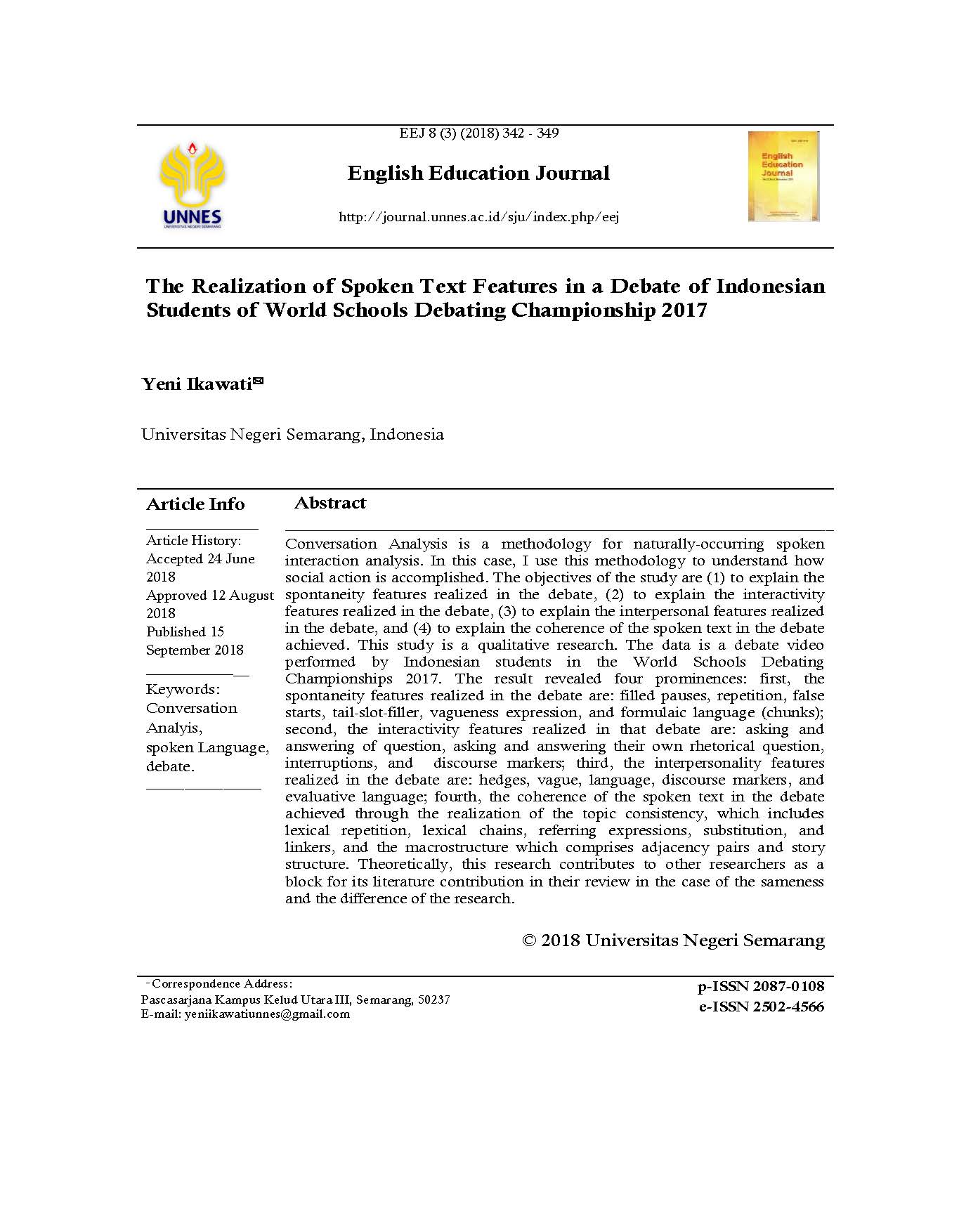The Realization of Spoken Text Features in a Debate of Indonesian Students of World Schools Debating Championship 2017
##plugins.themes.academic_pro.article.main##
Abstract
Conversation Analysis is a methodology for naturally-occurring spoken interaction analysis. In this case, I use this methodology to understand how social action is accomplished. The objectives of the study are (1) to explain the spontaneity features realized in the debate, (2) to explain the interactivity features realized in the debate, (3) to explain the interpersonal features realized in the debate, and (4) to explain the coherence of the spoken text in the debate achieved. This study is a qualitative research. The data is a debate video performed by Indonesian students in the World Schools Debating Championships 2017. The result revealed four prominences: first, the spontaneity features realized in the debate are: filled pauses, repetition, false starts, tail-slot-filler, vagueness expression, and formulaic language (chunks); second, the interactivity features realized in that debate are: asking and answering of question, asking and answering their own rhetorical question, interruptions, and discourse markers; third, the interpersonality features realized in the debate are: hedges, vague, language, discourse markers, and evaluative language; fourth, the coherence of the spoken text in the debate achieved through the realization of the topic consistency, which includes lexical repetition, lexical chains, referring expressions, substitution, and linkers, and the macrostructure which comprises adjacency pairs and story structure. Theoretically, this research contributes to other researchers as a block for its literature contribution in their review in the case of the sameness and the difference of the research.
